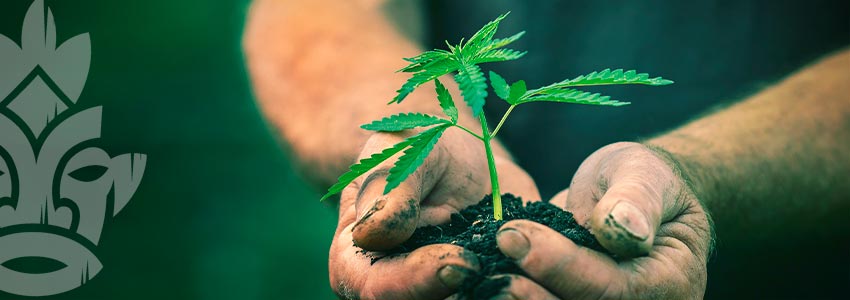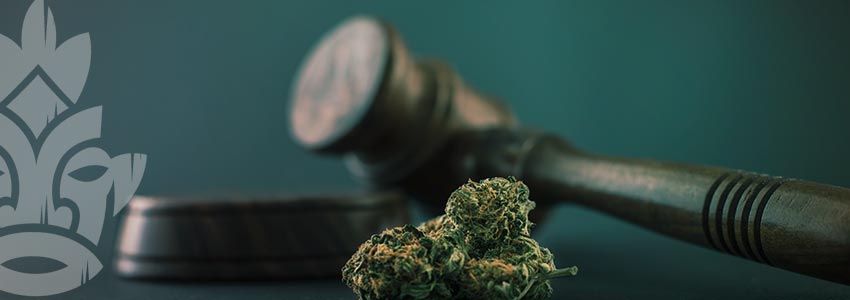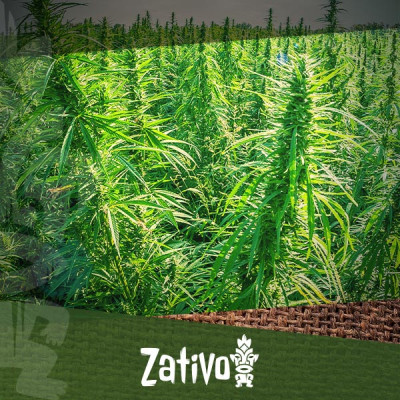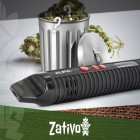Don't have an account?
Register NowYou have to add to cart at least 5 bottles or any program to make checkout.
- BlogThe Difference Between Cannabis And Hemp
The Difference Between Cannabis And Hemp
Published: January 20th, 2022
Categories:
Cannabis Info
You’ve probably heard the terms hemp and cannabis being thrown around, and you may have even seen pictures of the two—they look the same, right? So what’s the difference?
It’s a big question, which, depending on how you define the two, can have different answers. Though, broadly, there are differences between hemp and cannabis. Below, we’ll outline the distinctions and similarities between these often-confused terms.
What Is Cannabis?
Cannabis sativa is the taxonomic name given to the cannabis plant—also known as weed, pot, dope, and so on. Generally speaking, cannabis is a plant cultivated for its narcotic qualities; that is, to get high.
Whether you’re looking for a legal, agricultural, or functional definition, this is probably the easiest and most accurate way to define cannabis. It’s grown and used for its cannabinoid content—specifically THC.
What Is Hemp?
So, what is hemp? Hemp is, in fact, the same species as cannabis; Cannabis sativa.
Yet, hemp is used for many purposes, none of which include getting high. But these days, it can also be grown for its cannabinoid content—just not THC.
Hemp has been cultivated for thousands of years, not for its cannabinoids, but for its fibres and seeds. Hemp fibres taken from the main stem are versatile, providing the raw material for all sorts of textiles, rope, and building materials. In fact, it’s only in the last century or so, following prohibition in the US, that hemp has fallen out of favour.
Hemp seeds are also grown and used for culinary use. These days, it’s not unusual to find hemp oil and milk made from pressed seeds. However, the most modern use for hemp is as a legal source of high-CBD, low-THC flowers. As will be seen, the most certain definition lies in this distinction, and it’s a legal one.
What Is the Difference Between Cannabis and Hemp?

In what follows, we look into exactly what characterises a hemp plant compared to cannabis.
Chemical Constituents
In terms of cannabinoids, there are some significant differences between cannabis and hemp. As mentioned, cannabis is grown to exhibit high concentrations of THC—up to (or exceeding) around 30%. Not only this, but concentrations of other cannabinoids have been deliberately reduced, with CBD often coming in at under 1% and only trace amounts of other cannabinoids.
Hemp, on the other hand, must, by law, have a very low THC content: <0,3% in the US and <0,2% by EU and UK law (though it can vary by country).
Some hemp plants produce very little in the way of flowers (where cannabinoids are primarily produced), and thus produce very small amounts of any phytochemicals. Other hemp plants are grown specifically for their CBD content, and so will bear a more similar resemblance to cannabis plants compared to agricultural hemp.
So, the important and certain difference between the two is that hemp has a very low THC content, and cannabis has a significantly higher one.
Appearance
Though not absolute, the appearances of the two tend to differ a lot.
Cannabis, as it is grown for its flowers, leans toward being more compact and bushy—though many sativa-dominant strains can be more tree-like. However, a cannabis plant will likely have more substance to it compared to a hemp plant, looking heavier and fuller.
On the other hand, as it is often grown for its fibres, hemp tends to be tall and skinny. In most cases, the stem is the most valuable part, and so a tall plant with little in the way of branches and flowers is preferable.
But this is not always the case. As mentioned, hemp grown for CBD-rich flowers will look more similar to a cannabis plant. And hemp grown for seeds will look like something in between the two.
Cultivation

Hemp plants are more befitting of the name “weed” than cannabis. They are among the hardiest plants on the planet, able to grow in and even regenerate poor-quality soil, and generally deal with harsh conditions. As such, they are grown in large numbers, very close together, and in many environments.
Cannabis plants can be much needier, and tend to have much more carefully managed environments. Requiring adequate sunlight, nutrients, and space, cultivation of cannabis is a much more fine-tuned process. It’s not that the plants can’t survive in harsh conditions—many can—but to achieve a good-quality, large harvest (with flowers high in THC), they need to be grown under specific conditions.
Plant Sex
Cannabis sativa is a dioecious species, meaning there are separate male and female plants that must breed in order to create seeds. That said, it is unique in that it can also display hermaphroditic qualities—that is, under stressful conditions, female plants can grow male sex organs to pollinate themselves.
Male plants do not produce flowers, and as a consequence only contain trace amounts of any cannabinoids. Therefore, if your goal is to cultivate CBD or THC-rich flowers, male plants can only help with producing seeds for the next generation. On the whole, though, they are killed off, as if they pollinate a female crop, yield is actually reduced. So in all cases of cannabis cultivation, male plants are rarely used.
For hemp, though, it depends. As with cannabis, cultivating CBD-rich flower utilises males only to breed the next generation. With seed cultivation—for milk and oil—males are more useful, as all females need to be pollinated. Even so, the males still don’t yield any product themselves.
So, are male plants always despised? Not quite. Males produce finer, more flexible fibres. This makes them the plant of choice in the textile industry. For tougher textiles, like ropes and sails, the tougher female fibres are desirable. However, for the finest garments, males are best suited.
Legality

As previously mentioned, legal definitions are the most absolute when it comes to the cannabis vs hemp discourse.
Legally, a hemp plant is one that produces less than 0.2 or 0.3% THC. A cannabis plant is one that produces more. Concentrations of other cannabinoids do not come into legal definition—it is all to do with THC.
Use
Usage is another more certain way to define the two. Cannabis plants are those used to get high; hemp plants are those used for anything else.
But there are a few caveats. First, while other cannabinoids may not cause an intoxicating effect, they may still be smoked, vaped, or ingested for their effects. As CBD and other cannabinoid usage grows, hemp grown for its flower bears more similarity to cannabis compared to industrial hemp.
Second, you may find a plant that fulfils the purposes of hemp better than those of cannabis, yet has an illegal concentration of THC. For instance, a plant may produce the best fibres in the world but contains 0.5% THC, and so would legally be defined as cannabis. So usage is in some respects determined by other factors.
Hemp vs Cannabis: Is There a Real Difference?

As you might have figured out, there are no strict definitions for hemp or cannabis. In terms of cultivation and use, going by legal definitions is the safest bet. Nevertheless, it doesn’t capture all the differences.
In reality, the difference is rhetorical, not inherent. A single species has been bred into many different cultivars, each amplifying one or another characteristic depending on how we want to use it. They are, though, in the end, just variations of the same plant.





